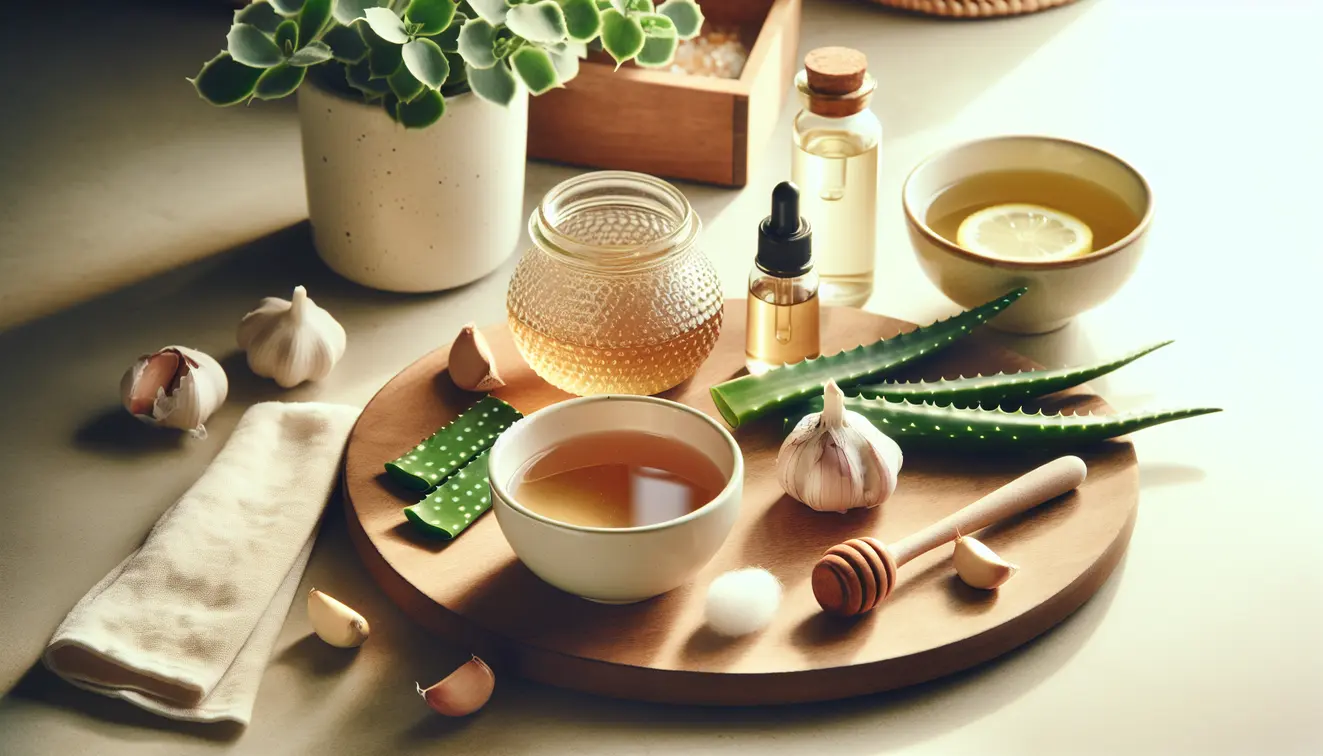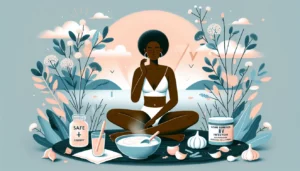Home Remedies for Cold Sores: Natural Solutions for Quick Relief in 2025
Estimated reading time: 10 minutes
Key Takeaways
- *Cold sores are caused by the contagious herpes simplex virus type 1 (HSV-1).*
- *Natural home remedies can soothe pain and may speed up healing, but do not completely cure the virus.*
- *Prevention depends on stress management, sun protection, immunity-boosting habits, and good hygiene.*
- *Seek medical advice if cold sores persist, recur frequently, or cause severe symptoms.*
Table of Contents
- Introduction to Cold Sores and Natural Healing
- Understanding Cold Sores: What Causes Them?
- Why Opt for Home Remedies for Cold Sores?
- Top 10 Evidence-Backed Home Remedies for Cold Sores
- Lifestyle Tips to Prevent Cold Sore Outbreaks
- When to Seek Medical Help for Cold Sores
- Frequently Asked Questions (FAQs) About Cold Sores and Home Remedies
Introduction to Cold Sores and Natural Healing
Cold sores can be a real bother, showing up as painful blisters often around your mouth. Caused by the herpes simplex virus, or HSV-1, they bring both physical discomfort and a dash of embarrassment for many. I get how frustrating it can be to wake up with that telltale tingle, knowing what’s coming next.
That’s why more people are turning to home remedies for relief. These natural solutions offer a gentle, budget-friendly way to ease symptoms without the harshness of some store-bought options. At WikiHomeRemedies, we’re here to guide you with trustworthy, research-backed insights to help you heal naturally.
Our goal in this piece is to walk you through proven, accessible remedies for cold sores. Did you know over half the population carries HSV-1, according to the National Institutes of Health (NIH)? You’re not alone, and with nature’s help, quick relief is within reach. Let’s dive into understanding this condition and finding the right path for you.
Understanding Cold Sores: What Causes Them?
Cold sores stem from the herpes simplex virus type 1, known as HSV-1. This sneaky virus is highly contagious, often spreading through close contact like kissing or sharing a drink. Once it’s in your system, it can lie dormant until something wakes it up and triggers an outbreak.
Several factors can spark a cold sore. Stress from a busy week, too much sun without protection, hormonal shifts during your cycle, or even a dip in immunity after a cold can set it off. Knowing these triggers helps you stay a step ahead and manage flare-ups better.
The lifecycle of a cold sore is predictable yet pesky. It often starts with a tingling or itching spot, followed by a blister that bursts, crusts over, and eventually heals. Recognizing these stages, as outlined by sources like the Mayo Clinic, lets you apply remedies at the right moment for faster recovery. Let’s break down the signs and spread to get a fuller picture.
Common Symptoms of Cold Sores
- A tingling or itching sensation, often the first hint before anything shows.
- Small, fluid-filled blisters, usually near the lips or mouth.
- Pain or tenderness around the affected area.
- Crusting or scabbing as the blister begins to heal.
These symptoms, backed by general consensus from the NIH, can vary in intensity. Some feel just a mild annoyance, while others deal with noticeable discomfort. Spotting them early ties directly into using the remedies we’ll cover soon to ease your suffering.
How Cold Sores Spread
Cold sores spread easily, which is why caution matters. The virus passes through direct skin contact, like a kiss during an active outbreak. Sharing personal items—think lip balm, utensils, or towels—can also transfer HSV-1 without much effort.
Outbreaks heighten the risk, as the blisters contain contagious fluid. According to the World Health Organization (WHO), a huge chunk of the global population carries this virus, often picking it up in childhood. Understanding this helps you protect yourself and others, linking straight to prevention habits we’ll explore later. For now, remember that a little care goes a long way in limiting the spread.
Why Opt for Home Remedies for Cold Sores?
When a cold sore strikes, reaching for a natural fix often feels right. Home remedies draw many because they’re usually easy to find, light on the wallet, and free from synthetic chemicals. They fit into daily life without the need for a trip to the pharmacy or a hefty bill.
Pharmaceutical options, while helpful, sometimes come with drawbacks. They can cost more, and some folks experience unwanted side effects. Natural solutions, on the other hand, focus on soothing symptoms gently, though I must stress they aren’t a cure for the virus itself. For severe or frequent outbreaks, a doctor’s input remains vital.
People increasingly search for these earthy alternatives, as Google Trends shows a rise in interest over recent years. At WikiHomeRemedies, we’ve seen how much value lies in nature’s toolkit. Let’s explore specific remedies that can bring relief, keeping safety and effectiveness at the forefront.
Top 10 Evidence-Backed Home Remedies for Cold Sores
Navigating a cold sore outbreak doesn’t have to feel daunting. Below, I’ve gathered ten natural remedies grounded in science and experience to help you manage symptoms. Each offers a unique way to soothe discomfort or speed healing, with clear steps and precautions to keep you safe. Let’s walk through them together.
Aloe Vera Gel for Soothing Relief
Aloe vera, with its cooling touch, is a go-to for skin irritations like cold sores. Its natural compounds help calm inflammation and keep the area hydrated, promoting healing. Studies, including those referenced by the NIH, suggest aloe can ease discomfort noticeably when applied regularly.
- Snip a fresh aloe leaf or grab a pure aloe vera gel from a trusted source.
- Dab a small amount onto the sore with a clean cotton swab.
- Repeat two to three times a day until the area feels better.
Be sure the product has no added fragrances or alcohol, as those can irritate. Expect a reduction in burning or tightness within a day or so. This remedy pairs well with daily care to keep outbreaks at bay.
Tea Tree Oil for Antiviral Action
Tea tree oil packs a punch with its antiviral properties, making it a strong ally against cold sores. Research from dermatological journals points to its ability to fight off viral activity, potentially curbing the sore’s growth. Its sharp scent signals potent natural strength.
- Dilute tea tree oil with a carrier like coconut oil—one drop to a teaspoon.
- Use a cotton bud to gently apply to the sore, avoiding healthy skin.
- Do this twice daily, morning and night.
Always test on a small skin patch first; it can sting if too strong. Don’t expect instant results—healing takes a few days—but redness may lessen sooner. Safety first, as this oil isn’t for internal use.
Lemon Balm to Shorten Outbreaks
Lemon balm, a herb with a calming aroma, holds promise for cutting down cold sore duration. Studies cited by the Mayo Clinic note its antiviral effects, which may help blisters heal faster. Users often report a soothing feel upon application.
- Brew a strong lemon balm tea or use a prepared ointment.
- Apply the cooled tea or cream directly to the sore with a clean finger.
- Repeat up to four times daily for best impact.
Ensure you’re not allergic by testing a small amount first. Results vary, but some notice improvement within a couple of days. It’s a gentle way to support your body’s recovery.
Ice Compress to Reduce Swelling
An ice compress offers instant relief by numbing pain and shrinking swelling. Cold slows down blood flow to the area, easing puffiness during the early blister stage. It’s a straightforward trick many swear by for comfort.
- Wrap a few ice cubes in a clean, thin cloth or towel.
- Press gently against the sore for five to ten minutes.
- Take breaks to avoid frosting the skin, repeating hourly if needed.
Don’t place ice directly on skin—it can damage tissue. You’ll likely feel relief right away, though healing still follows its course. This works best early on to manage symptoms.
Apple Cider Vinegar for Drying Out Sores
Apple cider vinegar carries antibacterial traits that may help dry out cold sores, speeding the scabbing phase. Anecdotal reports, supported by some WebMD insights, suggest it can prevent infection in broken blisters. Its sharp tang hints at active components.
- Mix one part vinegar with three parts water to dilute its strength.
- Dab the solution on the sore using a cotton swab, sparingly.
- Apply once or twice daily, watching for irritation.
Stop if it burns too much; not all skin handles it well. Drying may happen within a day, but full healing takes longer. Pair this with hygiene to avoid spreading the virus.
Garlic Paste for Antiviral Effects
Garlic isn’t just for cooking—it’s a natural antiviral fighter. Compounds like allicin, noted in NIH research, may disrupt viral spread, offering a boost against cold sores. Its bold scent reflects its raw power.
- Crush a fresh garlic clove into a paste with a little water.
- Apply a tiny dab to the sore using a clean swab.
- Leave on for ten minutes, then rinse gently; repeat twice daily.
Avoid overuse—garlic can irritate skin if left too long. Some notice less pain in hours, though healing spans days. It’s a strong option for those comfortable with its intensity.
Lysine Supplements to Prevent Recurrence
Lysine, an amino acid, might help stop cold sores from coming back. Research from the Mayo Clinic suggests it counters arginine, a nutrient HSV-1 thrives on. Many find fewer outbreaks with regular intake.
- Take lysine supplements (500-1000 mg daily) after consulting a healthcare provider.
- Pair with lysine-rich foods like fish or dairy if supplements aren’t your thing.
- Stick to a routine, especially during high-stress times.
Don’t exceed recommended doses without guidance; balance matters. Results aren’t instant—think weeks for prevention benefits. This remedy shines for long-term management over quick fixes.
Peppermint Oil for Cooling Comfort
Peppermint oil brings a refreshing chill that can dull cold sore pain. Its menthol content, backed by small studies, offers a numbing effect while possibly fighting viral activity. The crisp feel is often a relief.
- Dilute one drop of peppermint oil in a teaspoon of carrier oil.
- Dab gently on the sore with a cotton bud, avoiding open wounds.
- Use twice daily, ideally morning and evening.
Test for sensitivity first; it’s potent stuff. Comfort may come quickly, though healing follows naturally over days. It’s a cooling companion in your remedy lineup.
Honey for Antibacterial Healing
Honey, nature’s sweet healer, fights bacteria and keeps sores clean as they mend. Studies from the NIH highlight manuka honey’s strength in preventing infection. Its sticky texture forms a protective layer.
- Apply a thin layer of raw, unprocessed honey to the sore.
- Let it sit for 10-15 minutes before wiping off with a damp cloth.
- Repeat three times a day for soothing support.
Make sure it’s pure honey—processed kinds lose benefits. Expect a calming effect soon, with healing taking its usual time. It’s a safe, tasty way to care for your skin.
Licorice Root for Anti-Inflammatory Support
Licorice root has compounds that tame inflammation, easing cold sore redness. Research snippets from dermatology sources suggest glycyrrhizin in it may slow viral growth. Its earthy tone speaks to traditional use.
- Brew licorice root tea or use a prepared extract diluted in water.
- Apply with a cotton swab to the affected spot gently.
- Do this twice daily, monitoring for any skin reaction.
Avoid if you have high blood pressure—licorice can affect it. Swelling may dip within a day or two, supporting overall recovery. It’s a lesser-known but worthy option.
Lifestyle Tips to Prevent Cold Sore Outbreaks
Keeping cold sores away often comes down to smart daily habits. Your body’s defenses play a big role, and supporting them naturally can cut down on flare-ups. Let’s go over practical ways to build resilience and stay outbreak-free.
Stress is a major trigger, so finding calm matters. Simple practices like deep breathing or a short walk can lower tension. Aim for seven to eight hours of sleep nightly—rest rebuilds immunity, as discussed in our guide on Home Remedies for a Sore Throat.
Sun exposure can wake up HSV-1, so guard your lips. Use a lip balm with SPF 30 or higher whenever you’re outside. Diet helps too; load up on vitamin C from oranges or zinc from nuts to bolster your system.
Hygiene keeps the virus from spreading. Don’t share drinks, towels, or makeup during an outbreak. Small steps like these, grounded in NIH health tips, tie directly to fewer sores and a healthier you over time.
When to Seek Medical Help for Cold Sores
Home remedies work wonders for many, but sometimes a doctor’s care is the right call. Cold sores usually heal on their own, yet certain signs mean it’s time to seek help. Knowing these ensures you’re staying safe while treating naturally.
Watch for warning signals that need attention. If sores linger beyond two weeks, recur too often, or come with severe pain, don’t wait. Other red flags include sores spreading to your eyes or signs of infection like pus, as the Mayo Clinic advises.
Complications aren’t common, but they happen. A secondary infection or vision issues from HSV-1 near the eyes can turn serious. Reaching out for antiviral meds or tailored guidance from a professional can manage these risks. Trust your instincts—if something feels off, medical advice offers the clarity you need.
Frequently Asked Questions (FAQs) About Cold Sores and Home Remedies
Cold sores raise plenty of questions, and I’m here to clear things up. Let’s tackle some common queries with straightforward answers, drawing from trusted sources and lived experiences. You’ll find practical insights to ease your mind.
Can home remedies completely cure cold sores?
No, home remedies can’t wipe out the herpes simplex virus for good. They excel at soothing symptoms like pain or swelling and may speed healing. For a full cure, antiviral treatments under medical supervision are the only option, per WebMD guidance.
What exactly is a cold sore?
A cold sore is a small blister, usually near the mouth, caused by HSV-1. It starts with a tingle, forms a fluid-filled bump, then crusts over as it heals. It’s contagious, especially during outbreaks, and often recurs due to triggers.
Which home remedies are best for pain versus healing?
For pain, ice compresses numb the area quickly, while peppermint oil cools discomfort. For healing, aloe vera hydrates and honey protects against infección. Lemon balm may shorten duration, blending both benefits if applied early.
How do natural remedies compare to over-the-counter creams for cold sores?
Natural remedies like tea tree oil or garlic target symptoms with antiviral traits, often at lower cost. Over-the-counter creams, like those with docosanol, may work faster for some but can irritate. Both help, though severe cases lean toward pharmacy options, per Mayo Clinic notes.
How long do cold sores last with home remedies?
Even with remedies, cold sores typically last 7 to 10 days. Remedies like aloe or honey can ease discomfort sooner and may trim a day or two off healing. Consistency in application matters for the best outcome.
Are cold sores contagious, and how can I avoid spreading them?
Yes, they’re highly contagious, especially when blisters are active. Avoid kissing, sharing utensils, or touching the sore then others. Wash hands often and use personal items only, as the CDC recommends, to keep loved ones safe.
What’s the fastest way to heal a cold sore at home?
Start remedies at the first tingle—ice reduces swelling, while lemon balm or tea tree oil may slow progression. Keep the area clean and moisturized with honey or aloe. Quick action often shaves off healing time, though patience is still key.










